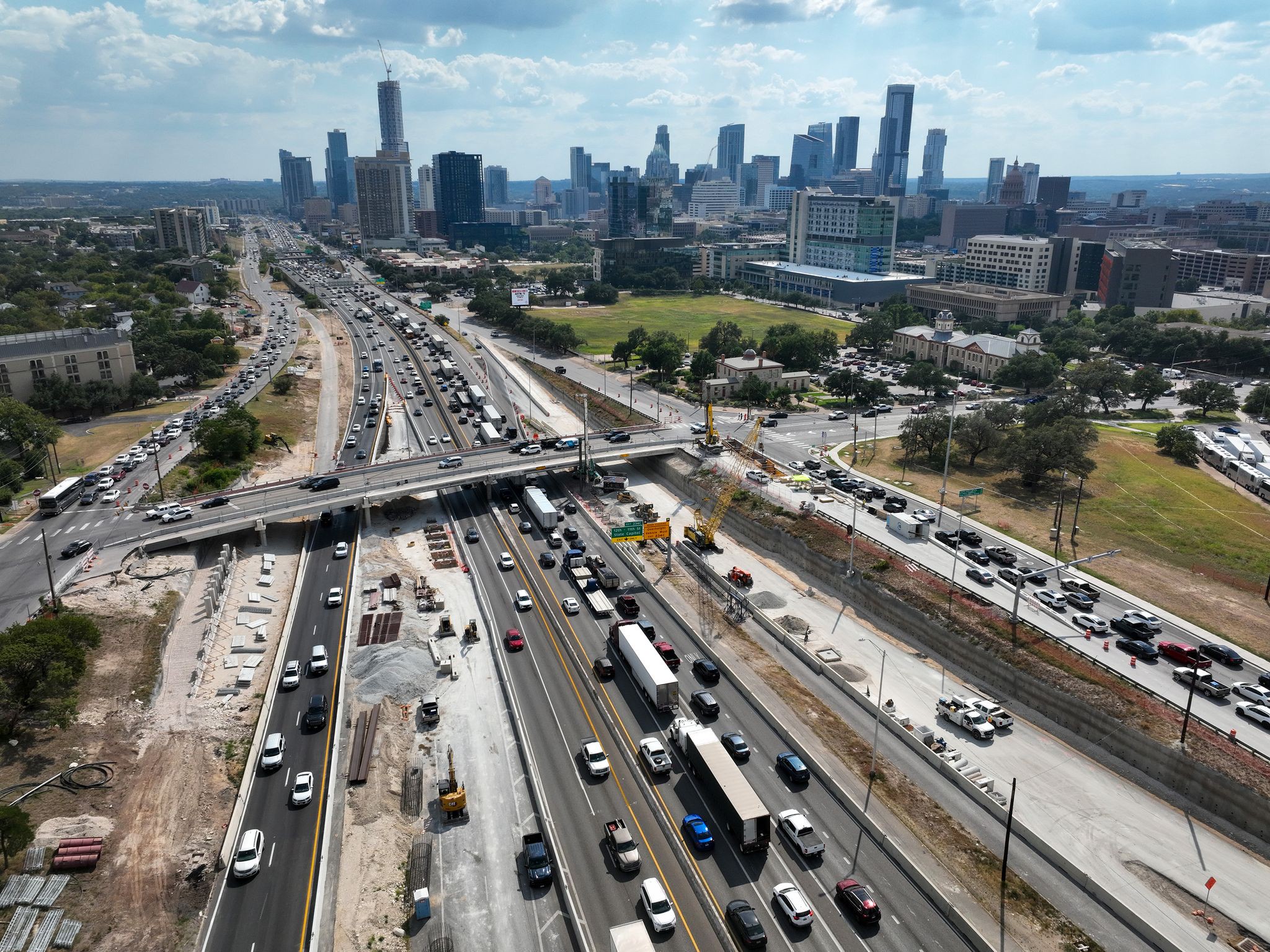news
Austin drivers sat in 64 hours of traffic in 2024, study says
Austin traffic might be bad, but commuters in 29 other U.S. cities — including two in Texas — have it worse.
Published November 14, 2025 at 11:00am by Alex Driggars

The average Austin commuter sat in traffic for 64 hours in 2024, according to a new report.
Austin traffic might be bad, but commuters in 29 other U.S. cities — including two in Texas — have it worse.
That’s one of many factoids included in the Texas A&M Transportation Institute’s most recent Urban Mobility Report, which has been released periodically since 1987. The 2025 report found that Austin and San Antonio have largely been spared from a national post-COVID rebound in traffic congestion even as it’s become harder to predict when the roads will be most jammed.
"Texas cities in general have not bounced back as rapidly as many of their peers around the country, and Austin is an example of that," Schrank said. "The congestion has come back much stronger for commuters outside of Texas than those in Texas."
Why?
Schrank pointed to a pair of statewide referenda passed in 2014 and 2015 that allocated billions of dollars to the State Highway Fund. He said the flurry of projects the additional funding spurred has helped dampen the growth of gridlock.
"It could be a lot worse without all the things that the transportation agencies have been doing in the state," Schrank said, adding that while road construction is a temporary pain, the resulting improvements lead to fewer headaches long-term.
That’s not to say that most Texas commutes are better than the national average. In fact, some are much worse.
In 2019, U.S. commuters lost 54 hours on average to congestion. That had increased to 63 hours by 2024. In Austin, commuters sat in traffic for 68 hours in 2019. In 2024, that had dropped to 64 hours — the 30th highest nationally.
That compares to 48 hours in San Antonio, 76 hours in Houston and 69 hours in Dallas-Fort Worth. (Houston and DFW have both seen an increase in traffic congestion since COVID, rising by 2% and 5%, respectively.)
An evolving rush hour
It has also become harder to guess what time of day freeways will be the most jammed, the report found. That’s because traffic patterns have shifted dramatically thanks to hybrid work policies.
Additionally, congestion is frequently mounting outside of the typical morning and afternoon peaks as more workers spend only portions of days in the office, the report notes. Since 2019, rush hour congestion has decreased while midday traffic has spiked.
"We still have our morning and evening peak periods, but we also have congestion that’s starting to show up at the 9 o’clock hour and the 2 o’clock hour," Schrank said. "People are taking advantage of being able to work remotely to avoid driving in the heaviest driving times of the day."
While beneficial for rush hour commuters, Schrank said, the shifts can make it more difficult for travelers to plan their trips around traffic. Thursday has overtaken Friday as the busiest traffic day of the week, while Monday is the calmest weekday on the roads.
"It’s very volatile, because you do not know on any given day what you’re going to experience on the road," Schrank said.
Commercial trucks a driving factor
As commuter patterns shift so, too, do shipping patterns with the ever-rising use of e-commerce, according to the report. Truck traffic is more widespread and less predictable than it was before 2020’s pandemic, and truck congestion rose by 19% since 2019, it notes.
"There are more commercial trips happening in the middle of the day, trying to get all the goods and services delivered to your house and to businesses and everything else," Schrank said.
In Austin, though truck delays last year dropped 13% since 2023, the total truck-related congestion in the city is still 7% higher than it was pre-pandemic. That delay cost commercial trucking companies $253 million and wasted 3.8 million gallons of fuel in 2024.

